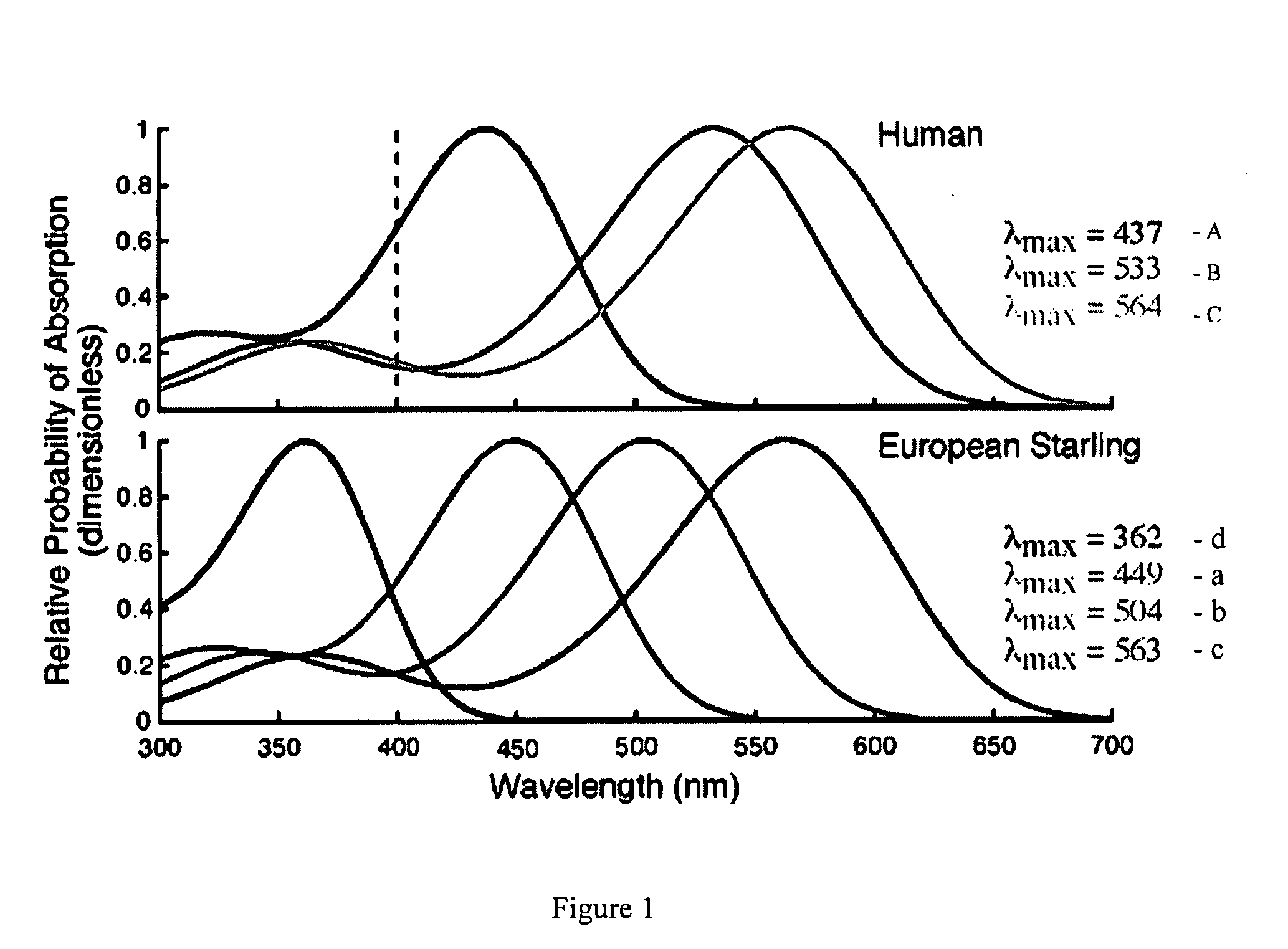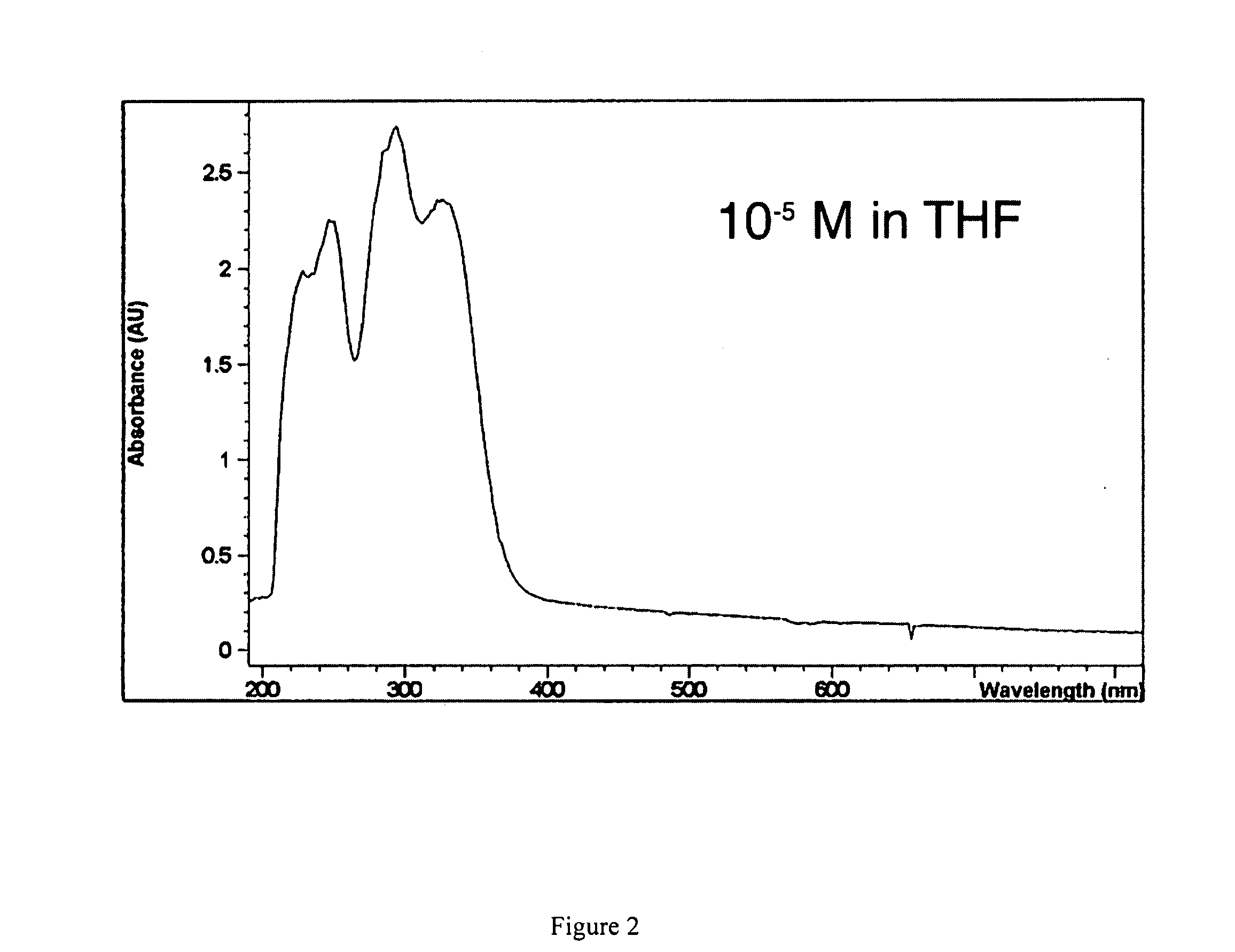Bird-deterrent glass coatings
a technology of glass coating and bird-deterrent, applied in the direction of radiation-absorbing paint, instruments, lighting and heating apparatus, etc., can solve the problems of instant death of birds, stunned or fatally injured, and birds inadvertently flying into and colliding with windows and glass panes in homes and commercial buildings
- Summary
- Abstract
- Description
- Claims
- Application Information
AI Technical Summary
Benefits of technology
Problems solved by technology
Method used
Image
Examples
example 1
[0025] A 10% solution of 2-hydroxy-4-(3-triethoxysilylpropoxy)diphenylketone is prepared in tetrahydrofuran. Water in the amount of 1.5 molar equivalents is then added to the solution. The solution is aged twenty minutes to allow partial hydrolysis of the ethoxy groups. The solution is then applied to at least a part of a transparent or translucent exterior surface, for example, a window, or other glass treatment, in the form of an aerosol spray or a resin. A UV spectral analysis of this solution in depicted in FIG. 2. At temperatures of about 15° to about 30° C., a clear, anti-reflective layer may be optimally, and is preferably, applied to the exterior facing surface of the UV-absorbing coating. The anti-reflective layer may be in the form of a transparent membrane and may be attached to the UV-absorbing layer by use of an adhesive bead, strip, tape, foam, sealant, or by chemical bonding. Such coated transparent exterior surfaces, such as windows and other glass treatments, help t...
example 2
[0026] A 1 liter flask was equipped with a mechanical stirrer, pot thermometer addition funnel and distillation head. It was charged with 460 g of isopropanol, 113 g of methyltrimethoxysilane and 50 g of dimethyldimethoxysilane, and stirring was commenced. To this, 37 g of water 0.1 g of tetramethylammonium hydroxide and 0.4 g of formic acid were added rapidly, and the flask was heated to reflux until a clear solution resulted. Approximately 150 g of a mixture of methanol and isopropanol were removed by distillation. The pot was allowed to cool and 5 weight percent of 2-hydroxy-4-(3-triethoxysilylpropoxy)diphenylketone was added to the solution.
example 3
[0027] The resin solution of the present solution was applied to glass substrates by dipping, resulting in a visually clear coating that cured to form an adherent film at room temperature. In some cases streaking was observed. The streaking was eliminated by diluting the resin solution with an equal volume of isopropanol.
PUM
| Property | Measurement | Unit |
|---|---|---|
| threshold wavelengths | aaaaa | aaaaa |
| temperatures | aaaaa | aaaaa |
| weight percent | aaaaa | aaaaa |
Abstract
Description
Claims
Application Information
 Login to View More
Login to View More - R&D
- Intellectual Property
- Life Sciences
- Materials
- Tech Scout
- Unparalleled Data Quality
- Higher Quality Content
- 60% Fewer Hallucinations
Browse by: Latest US Patents, China's latest patents, Technical Efficacy Thesaurus, Application Domain, Technology Topic, Popular Technical Reports.
© 2025 PatSnap. All rights reserved.Legal|Privacy policy|Modern Slavery Act Transparency Statement|Sitemap|About US| Contact US: help@patsnap.com


